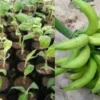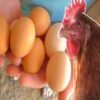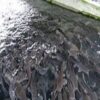- このトピックは空です。
- 投稿者投稿
- 3月 23, 2025 5:34 am #602201

Cassava stem selection and preparation are vital steps in ensuring high-quality yields in cassava farming. The process of selecting the best stems and preparing them properly is crucial for ensuring the health of the plant and its subsequent productivity.
In this article, we will discuss the importance of stem selection, various factors to consider during the process, and methods for preparing cassava stems for planting.
1. Importance of Cassava Stem Selection
Selecting the right cassava stem is a fundamental aspect of successful cassava farming. Healthy, high-quality stems ensure strong plant growth and higher yields. The stem serves as the foundation for the cassava plant, and if it is not chosen carefully, it may result in poor growth, low productivity, and susceptibility to pests and diseases.
Farmers need to pick stems from healthy, high-yielding plants that are free from diseases to ensure the best results. The right stem also determines the plant’s ability to resist adverse environmental conditions and ensures that the cassava is resilient throughout its growth cycle.
2. Key Factors for Selecting Healthy Cassava Stems
Several factors should be considered when selecting cassava stems. First, the age of the plant is important; stems from mature plants are usually more resilient and have better germination rates. It’s essential to ensure that the stems are from disease-free plants, as using infected stems could lead to the spread of diseases like cassava mosaic disease or bacterial blight.
Additionally, the stem should be of the right size—typically, stems should be 25 to 30 centimeters long and have a diameter of at least 1.5 centimeters. These dimensions ensure that the stems are robust enough for rooting and sprouting.
3. Proper Handling and Storage of Cassava Stems
Once healthy stems are selected, proper handling and storage are key to maintaining their quality. Cassava stems should be carefully harvested to avoid damage, which can lead to decay or infection. After cutting the stems, they should be stored in a cool, dry place, away from direct sunlight, to prevent them from drying out.
Farmers can also store stems in a horizontal position or stand them up to avoid rot. It’s important not to store stems for too long, as the viability of the stem decreases over time. Ideally, cassava stems should be planted shortly after harvesting to maintain their health and vitality.
4. Preparation of Cassava Stems for Planting
Before planting, cassava stems need to be properly prepared to ensure successful germination and growth. The preparation process involves cutting the stems into smaller pieces, typically 20 to 30 centimeters in length. These stem cuttings should be planted with the bottom end facing down and the top end facing up.
The cuttings should be planted in well-prepared soil, ensuring they are planted deep enough to allow for root development. Additionally, farmers may treat the stems with fungicides or insecticides to prevent disease and pest issues before planting.
It’s also essential to ensure that the planting holes are properly spaced to allow for adequate air circulation and sunlight, which can promote healthy root development.
5. Benefits of Proper Cassava Stem Selection and Preparation
The benefits of proper cassava stem selection and preparation are immense. First and foremost, it leads to better yields, as healthy, well-prepared stems produce more robust plants.
This, in turn, helps farmers achieve a higher marketable yield of cassava, which can significantly improve their income. Proper stem selection also reduces the risk of diseases and pests, which can compromise the quality and quantity of the cassava crop.
Moreover, healthy stems ensure that the plants are strong enough to withstand environmental stressors such as drought or heavy rainfall. All these factors contribute to the overall success of the cassava farming venture.
In conclusion, cassava stem selection and preparation play a critical role in determining the success of a cassava farming project. By focusing on selecting healthy, disease-free stems, handling them with care, and preparing them correctly for planting, farmers can maximize their chances of producing high-quality cassava with optimal yields.
Implementing the best practices in stem selection and preparation not only improves the health and productivity of the cassava plants but also helps farmers secure better returns on their investment.
Read Also: From Root to Loaf: Exploring the Advantages and Considerations of Cassava Flour Bread
- 投稿者投稿
- このトピックに返信するにはログインが必要です。






